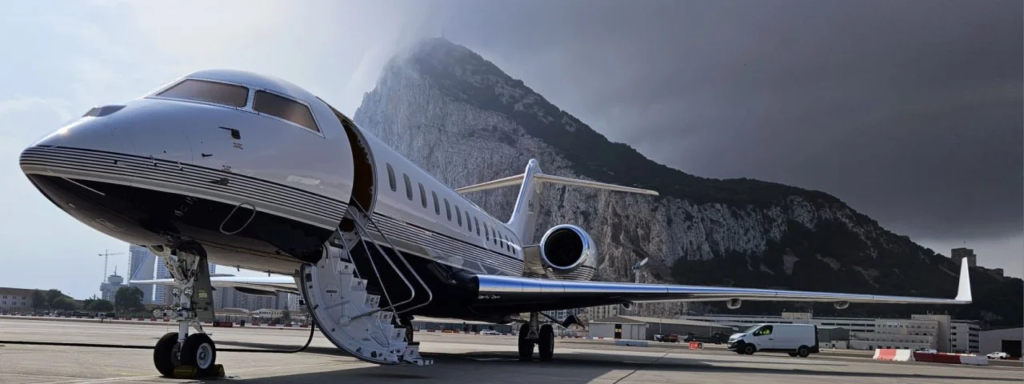The global business jet market is expected to experience rapid growth, reaching a valuation of US$ 29.75 billion by 2033, according to a recent industry report. This growth is driven by increasing demand for luxury, flexibility, and time-saving solutions among high-net-worth individuals and corporations worldwide.
The market, which stood at approximately US$ 21.8 billion in 2023, is projected to grow at a compound annual growth rate (CAGR) of nearly 3.2% over the next ten years. Source: MarketsandMarkets Report
What Is Driving This Sky-High Growth?
Several key factors are contributing to the expected growth in the business jet market:

Rise in High-Net-Worth Individuals
As global wealth increases, especially in regions like Asia-Pacific and the Middle East, the demand for private air travel is rising significantly. The number of ultra-high-net-worth individuals (UHNWIs) has increased post-pandemic, pushing up the need for private and business jet services.
Increase in Business Travel
Even in the age of Zoom and remote work, face-to-face business meetings remain essential for many industries. Corporate executives, government officials, and professionals continue to rely on business jets for fast, secure, and private transportation.
Demand for Fractional Ownership & Jet Cards
Rather than purchasing entire aircraft, many consumers are opting for fractional ownership, jet cards, and charter services, making private air travel more accessible and cost-effective. This shift in purchasing behavior is expanding the market base beyond billionaires.
Read more about jet card programs and private aviation models
Key Trends Transforming the Business Jet Sector
The industry is evolving rapidly. Some of the most notable trends include:
1. Sustainable Aviation Fuels (SAF)
As environmental concerns grow, business jet operators are shifting to sustainable aviation fuels to reduce carbon emissions. OEMs like Bombardier, Gulfstream, and Dassault are heavily investing in eco-friendly innovations.
2. Digital Flight Scheduling
Technology has revolutionized how charters are booked. Through mobile apps and real-time digital platforms, users can now book a business jet in minutes, similar to how one books a taxi or hotel room.
3. Growth of Super-Midsize and Long-Range Jets
Modern business needs demand faster and longer-distance travel. As a result, aircraft like the Gulfstream G700, Bombardier Global 7500, and Dassault Falcon 10X are gaining popularity due to their range, comfort, and technology.
Major Players in the Market
Several companies dominate the global business jet market. These include:

- Gulfstream Aerospace Corporation
- Bombardier Inc.
- Dassault Aviation
- Textron Aviation (Cessna and Beechcraft)
- Embraer Executive Jets
These manufacturers are constantly innovating and expanding their product lines to meet changing customer needs.
Check out Bombardier’s latest sustainable business jet innovations
Regional Market Insights
North America: Market Leader
North America, particularly the United States, remains the largest market for business jets, accounting for over 60% of global share in 2023. The region’s dominance is due to the high concentration of HNWIs, corporate giants, and business aviation infrastructure.
Europe: Growing Demand for Eco-Friendly Jets
In Europe, business jet adoption is rising, driven by increasing corporate travel and environmental consciousness. Regulatory pressure and fuel taxes are encouraging the use of SAF and newer, more efficient models.
Asia-Pacific: The Fastest Growing Region
Countries like India, China, and Singapore are seeing a boom in private aviation. Increasing disposable income and regional business growth make Asia-Pacific the fastest-growing market segment.
Read more: Asia-Pacific Private Jet Demand Rising Fast
Challenges to Market Expansion
Despite strong growth prospects, the business jet market faces a few hurdles:
1. High Operating and Maintenance Costs
Even for wealthy individuals, the cost of jet ownership—including fuel, staff, insurance, and hangar fees—remains high.
2. Environmental Regulations
Global regulatory bodies are pushing for reduced emissions, which may restrict older aircraft operations and impose extra costs on operators.
3. Geopolitical Instability
Events like wars, trade restrictions, and political instability can impact jet manufacturing and delivery, especially in regions dependent on global supply chains.
Future Outlook: A Sky Full of Opportunity
As the global economy continues to recover and digitization spreads across sectors, the demand for safe, fast, and flexible travel will keep growing. The business jet market’s projection to reach US$ 29.75 billion by 2033 reflects broader economic shifts and technological advancements.
With major manufacturers launching eco-friendly and technologically advanced aircraft, and new financing models like on-demand charter apps, the private aviation space is no longer exclusive to billionaires. The future of business jets is bright, fast, and cleaner than ever before.
Explore Future Business Jet Trends on Aviation Today
Conclusion
The projected growth of the business jet market underscores a shift in how the world approaches luxury travel and corporate mobility. As technology, sustainability, and affordability converge, private aviation is becoming more accessible and efficient. Investors, manufacturers, and operators all have their eyes set on the skies—because that’s where the market is headed.
Also Read – Trump Targets Huawei Again with Stricter Chip Export Rules






